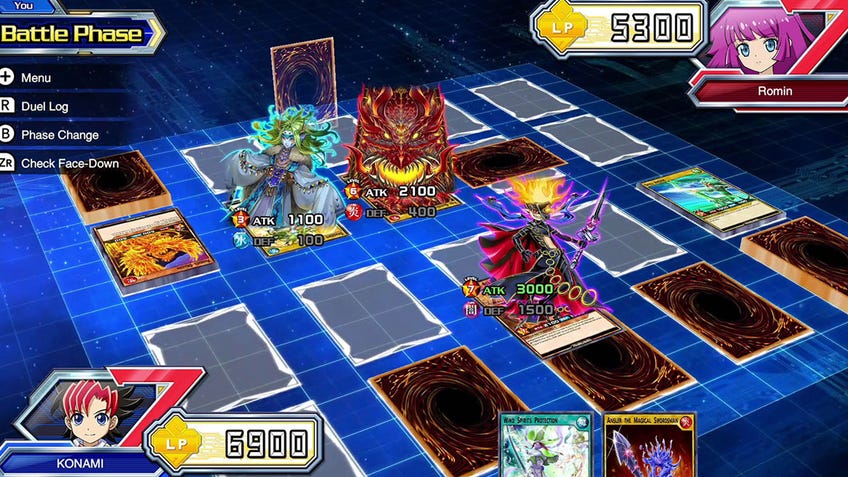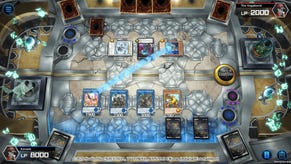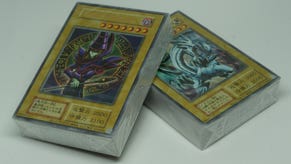Yu-Gi-Oh! in 2022: Master Duel and a long-awaited return to tournaments help the TCG to thrive ahead of its 25th anniversary
The future is looking brighter than ever for the long-running card game.
Yu-Gi-Oh! in 2022 was a lot of things, but the most obvious and likely legacy of this year on the future of the TCG can be summed up with just two words: Master Duel. For all the new physical sets and the return of in-person tournaments (if not world championships) that marked a return to normalcy for the long-running card game, the impact of Master Duel in revitalising interest in the TCG and the wider Yu-Gi-Oh! franchise can’t be ignored. Discussions of the success and evolution of the TCG in 2022 requires a discussion on the successes and problems of Master Duel as an avenue to bring lapsed and new fans into Yu-Gi-Oh! as a franchise.
As ever, last year’s four main core booster packs - Battle of Chaos, Dimension Force, Power of the Elements and Darkwing Blast - were joined by a trio of structure decks, including the much-anticipated Dark World structure deck, and various special sets released over the course of the year that brought a consistent level of variety to both competitive and casual play throughout the year.
Compared to recent years there’s been a healthy mix of decks competing for the top spots at major tournaments.
Compared to recent years there’s been a healthy mix of decks competing for the top spots at major tournaments. Even as certain archetypes inevitably dominated the winning positions at most major events it was possible for rogue decks to go all the way and snatch victory. Perhaps nowhere was this more evident than with the European Championships held in Antwerp, Belgium, where a tournament dominated by Spright and Tearlaments was won by a relatively overlooked yet undefeated Rikka Sunvalon deck piloted by Marcus Patel.
Such an ability for upsets even at the top level of competition is a cause for celebration, and a sign of a healthy and varied meta just as major Yu-Gi-Oh! tournaments were returning from the doldrums of online-only Remote Duel formats to the in-person stage. Even without a World Championships being held in 2022, the return of major in-person events including the Yu-Gi-Oh! Championship Series and qualifying championships to a scale beyond the tentative return seen in 2021 is an undoubted cause for celebration.
Ultimately, 2022 was defined by the explosive revolution inflicted on the game with the release of Power of the Elements that instantly allowed the Spright and Tearlament archetypes introduced in that set to dominate for the remainder of the year. Since their release at the beginning of August, Tearlaments and Spright have not only been the most common decks to top major YCS events, bar the European Championships, but these decks have frequently come out as the overall winner at events such as those held in Pasadena, Minneapolis and Utrecht.
Previously dominant decks like Despia and Prank-Kids were soon squashed by various Yu-Gi-Oh! ban lists throughout the year, whose approach to balance mostly centred on removing dominant archetypes while mostly leaving powerful yet generic staple cards that found a home in decks across the duel spectrum alone, irrespective of community demands to limit their dominance. (It took until the very end of the year for Konami to ban the much-derided Mystic Mine, whose effect preventing the player with the most monsters from activating monster effects or declaring attacks was both a main-deck staple and universally hated as a card that all players needed to counter to find a path to victory.)

Yet discussions of the ever-evolving nature of the Yu-Gi-Oh! meta can’t be divorced from the impact the release of Yu-Gi-Oh! Master Duel has had on bringing new players and ideas into the long-running card game, never mind making it more accessible than ever for new players to jump into playing the game for themselves. Master Duel’s launch on consoles, PC and mobile devices at the start of the year was an immediate hit, reaching 50 million downloads by the end of November and retaining a consistent user base on platforms such as Steam following a stabilisation of player numbers from its initial launch peak.
As players have sought official and unofficial digital avenues to practise and play Yu-Gi-Oh! outside of tournaments and without the physical cards, and without engaging in the non-standard rulesets found in other mobile experiences like Duel Links, many have cited the lower monetary investment necessary to play Master Duel as an incentive to prioritise their enjoyment in the digital realm over the physical. As lapsed players returned to the franchise, others used it to expand and diversify their enjoyment of Yu-Gi-Oh! into this new digital world.
The future of the card game has never looked brighter.
Where does all this tie into the physical card game? With interest in Yu-Gi-Oh! spiking around the time of the game’s release (Google searches for Yu-Gi-Oh! doubled during the week of Master Duel’s release), Konami has cited the game as not only a successful money-maker in its own right, but a tool for converting these new and lapsed players into collectors of the real thing. During Konami’s half-year financial statement, the company noted an increase in Yu-Gi-Oh! TCG sales in part as a result of new players being brought into the franchise by Master Duel, leading to an increase in booster pack and merchandise sales as new customers took an interest in the series and older players returned to the game.
As we head into 2023 and a new year of tournaments and the promised return of the Yu-Gi-Oh! World Championships after an enforced four-year absence, the future of the card game has never looked brighter. While the concerns players have over high-rarity and hard-to-obtain cards increasing the financial investment needed to play Yu-Gi-Oh! at the top level remain, the improved accessibility of the game through digital efforts that Konami has increasingly invested in - along with the new efforts the company has undertaken to engage younger audiences through speedier formats like Rush Duel - means it’s hard not to see the uptick in fortunes continuing as the game celebrates 25 years since its Japanese launch.

Indeed, the only question that remains hanging over Yu-Gi-Oh!’s direction in 2022 is the role that Speed Duel has in Konami’s future plans. With the format mostly abandoned in Japan in favour of Rush Duel, which continues to enjoy growing success among younger players thanks to anime and video-game tie-ins, Rush Duel booster packs and even major collaborations with convenience stores like 7-Eleven, the relative silence and lack of interest in Speed Duel in the west despite the release of three separate booster packs in 2022 speaks to a growing uncertainty over the format’s viability as an alternative to the traditional TCG format.
Yu-Gi-Oh! has no reason not to grow from strength to strength in 2023.
Whether a translation of Rush Duel’s success to English markets would see similar levels of success as those found in Japan remains uncertain, yet the lack of excitement surrounding Speed Duel as a format remains a sole black mark on an otherwise successful year for Yu-Gi-Oh! as it recovers from a pandemic-fueled downturn.
Yu-Gi-Oh! has no reason not to grow from strength to strength in 2023. Starting in February with the release of the next core booster pack in Photon Hypernova and the much-loved Traptrix archetype receiving its own structure deck, bolstered by the promise of continued updates for the franchise’s mobile games and Master Duel, the only way is up for the card game. After 25 years, few more turbulent than those since 2020, that’s quite an achievement.









